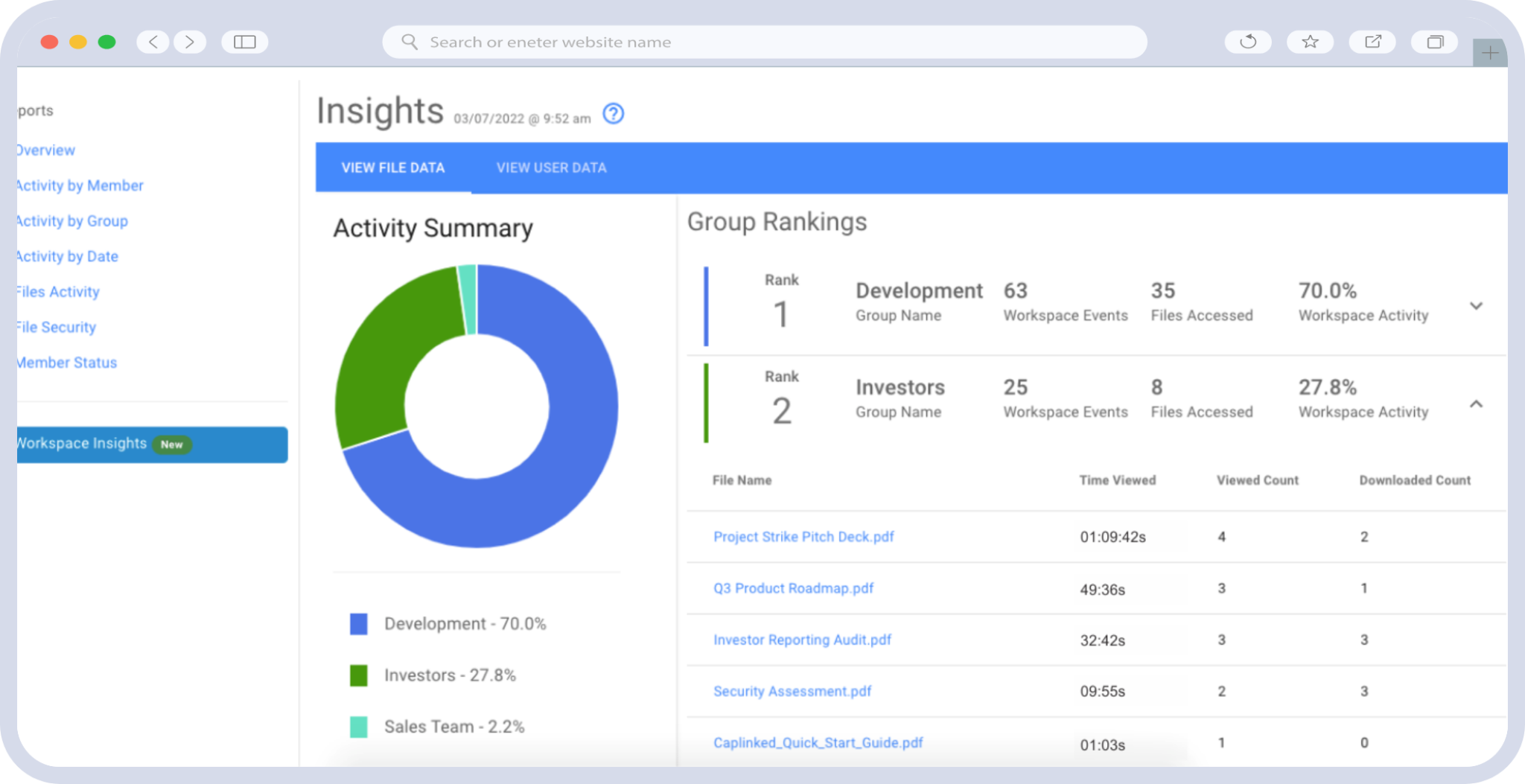Running a competitive auction for your company isn’t just about attracting interest. You must also create an environment where multiple bidders can engage confidently, evaluate fairly, and compete on equal footing. When done right, this process drives higher valuations and better deal terms for the seller. But the linchpin of every successful auction is the sell side virtual data room (VDR).
A poorly organized or difficult-to-navigate data room can frustrate bidders, stall momentum, and ultimately reduce your leverage. By contrast, a secure and well-structured sell side VDR sets the stage for a smooth process, minimizes delays, and maximizes competition.
In this guide, we’ll explore best practices for setting up and running a sell side virtual data room in multi-bidder M&A deals.
Table of Contents
ToggleWhy the Sell Side Virtual Data Room Matters in Auctions
At its core, the sell side VDR is the seller’s platform for transparency and control. It houses all the information a bidder needs to conduct due diligence, including financials, legal documents, contracts, IP, HR files, and operational details.
However, a VDR is not just a filing cabinet. In a multi-bidder environment, the data room becomes:
- A confidence builder: The more professional and accessible the platform, the more bidders trust the process.
- A time saver: A structured data room reduces redundant questions, letting bidders move faster.
- A competitive lever: When every bidder has equal access to the same data, the seller keeps the upper hand in negotiations.
A sell side VRD that feels chaotic or incomplete, on the other hand, signals disorganization and can weaken your position.
Best Practice 1: Build Early, Populate Strategically
Don’t wait until buyers are knocking to start building your sell side virtual data room. The most successful sellers begin curating their content months before going to market.
This early preparation allows you to:
- Identify gaps in your records, such as missing contracts, outdated financials, or compliance issues.
- Resolve red flags, like unsigned agreements or pending litigation, before bidders find them.
- Control the narrative by deciding what information to present, in what order.
Think of the sell side virtual data room as part of your marketing strategy. Just as you would polish your financial presentation for investors, you want your data room to reflect an organized, well-run company.
Best Practice 2: Structure for Clarity, Not Clutter
Imagine a bidder logging in and finding thousands of files dumped into a single folder. That bidder won’t stay engaged for long.
The sell side virtual data room should be intuitive and structured like a roadmap. A common framework includes:
- Corporate documents: Charter, bylaws, shareholder agreements.
- Financials: Historical statements, forecasts, audit reports.
- Contracts: Customer, supplier, lease, partnership agreements.
- Intellectual property: Patents, trademarks, copyrights, licenses.
- HR and employment: Key personnel agreements, benefit plans, compliance records.
- Legal and compliance: Litigation, regulatory filings, permits.
Clear folder names, consistent file naming conventions, and logical sequencing all reduce friction. Bidders should feel like they can find any document within two or three clicks.
Best Practice 3: Prioritize Security and Permissions
In competitive auctions, multiple bidders and their advisors are accessing sensitive company data simultaneously. That makes security paramount.
The sell side must balance openness with protection:
- Granular permissions: Not every bidder should see every file at once. Start broad, and unlock more detailed documents (such as customer lists) only as bidders progress. Choose a VDR with an advanced digital rights management tool to simplify permission setting and monitoring.
- Watermarking and DRM: Apply digital rights management tools to prevent downloading or unauthorized sharing.
- Audit trails: Track who viewed which files, and when. This protects you and helps gauge bidder engagement.
By tightening control, you protect your company’s value. Even if the deal doesn’t close, you’ve preserved what belongs to you and are ready when the next buyer comes along.
Best Practice 4: Use the VDR to Manage Q&A
In multi-bidder M&A, bidder questions can quickly spiral into an administrative nightmare. A sophisticated sell side virtual data room includes a Q&A module, where bidders submit questions directly through the platform.
Benefits of centralized Q&A include:
- Consistency: Sellers can provide uniform answers to all bidders, avoiding accidental favoritism.
- Efficiency: Instead of repeating responses, you post once for everyone.
- Transparency: Advisors and internal stakeholders can track and approve responses before release.
Handled well, Q&A turns the sell side virtual data room into a hub of active engagement, not just a passive document repository.
Best Practice 5: Keep Bidders Engaged with Updates
Competitive tension only works if bidders stay motivated. The sell side VDR can support this by:
- Regular updates: Upload new reports, contracts, or compliance documents as they become available.
- Notifications: Inform bidders when new material is posted, encouraging them to return to the platform.
- Version control: Ensure bidders can distinguish between current documents and outdated ones.
Each update signals momentum and keeps buyers engaged throughout the process.
Best Practice 6: Leverage Analytics to Read the Room
One of the biggest advantages of a modern sell side virtual data room is analytics. The platform shows you which bidders are most active, which folders they spend the most time on, and whether engagement is rising or falling.
This insight helps you:
- Identify serious bidders early.
- Spot potential deal issues. If multiple bidders focus heavily on litigation files, you know what’s raising eyebrows.
- Adjust strategy. You can provide targeted clarifications or schedule follow-up calls based on activity.
Instead of flying blind, you gain visibility into buyer behavior, which is critical for steering a competitive process.
Best Practice 7: Close with Precision
As the auction narrows to final bidders, the sell side virtual data room remains essential. Final offers often hinge on confirming the smallest details—everything from revenue recognition to environmental permits.
At this stage:
- Double-check that all material disclosures are in the room.
- Ensure sensitive documents are only accessible to the final round bidders.
- Use audit logs to demonstrate fairness if any disputes arise.
A precise finish avoids last-minute surprises and protects the integrity of the process.
Position Your Sell Side for Success
For sellers, the virtual data room is more than a document store; it’s a strategic tool. When structured with care, the sell side VDR strengthens buyer confidence, speeds due diligence, and fosters the competitive tension that drives deal value upward.
With CapLinked’s virtual data room, these best practices aren’t just theoretical—they’re built into the platform. From early preparation and clear structure to industry-leading security, centralized Q&A, analytics, and seamless advisor collaboration, CapLinked equips you to turn your sell side VRD into a true engine of competitive advantage.
It’s time to experience the power of CapLinked for yourself. Start your 14-day free trial today.




